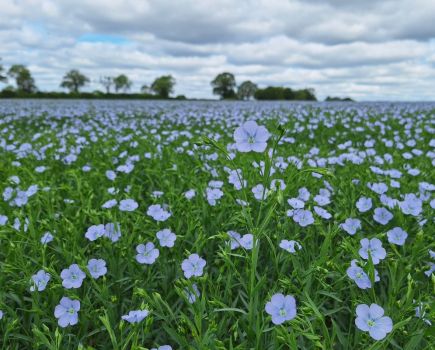A tough few months has resulted in a huge variation in crops across the country, posing numerous management headaches including weed control, warn experts.
At one end of the scale are crops sown relatively early in September, that established well in good conditions and received a timely pre-emergence spray, says Hutchinsons’ Cam Murray.
Conversely, there are later-sown wheats drilled after the weather broke, potentially into sub-optimal conditions and without any pre-em herbicide. There are also crops that, regardless of drilling date, have struggled to establish or suffered rooting damage due to severe flooding or waterlogging.
Cam says on the worst affected areas, tough decisions may be required as to whether to re-drill, but with a shortage of spring cereal seed this year, options are limited.
He warns that where crops have experienced prolonged periods of waterlogging and anaerobic conditions, compromised root development is likely to increase crop stress. “Even if autumn weed control was compromised and you’re keen to get on with a spring herbicide once conditions allow, don’t apply anything if crops are showing stress or yellowing; it’ll just make a bad situation worse.
“Accurate spray timing is going to be paramount this spring and key to not doing any more damage than has already been done by the weather,” he stresses.
Cam advises growers to assess crop condition and weed pressure, then consider the most suitable strategy.
Delayed applications
Where crops are stressed due to either waterlogging, or, potentially where the pre-em has been washed into the rooting zone, he says it may be better to delay herbicide application and this is especially the case for stronger contact grassweed chemistry. Instead, he says to prioritise early nitrogen to stimulate growth and improve resilience to any potential herbicide effects.
“If it looks stressed, sometimes allowing an extra week or two to get the crop into a stronger position could be worthwhile. Phosphites can help to stimulate roots to get the nutrition pumping around the plant system; also consider nitrogen timing. Soil nitrogen reserves are very low, so a ‘little and often’ approach could be the way to go in terms of availability to the plant,” says Cam.
Yorkshire based agronomist Sam Hugill estimates that around 30-40% of winter wheat drilled in his area last autumn didn’t receive a residual herbicide due to the weather, putting more emphasis on spring controls.
“In an ideal world, this would involve contact herbicides to treat weeds already present, plus residual chemistry to catch later emerging weeds and hopefully avoid coming back with expensive contact chemistry later on. But, with the weather-related problems we’ve seen and ongoing pressure on margins and costs, a perfect world may not exist.”
Decisions should be made on a field-by-field basis, he adds. “If, for example, it looks as though conditions won’t allow travel until March to apply residual chemistry, there could be more sizeable weeds by that time so the focus may be better spent on contact chemistry rather than residuals. There has to be an ongoing discussion between grower and agronomist about what’s best for each field,” explains Sam.
Reduced persistence
Even where crops received a pre-em, heavy rainfall will have dramatically reduced the persistence of residual chemistry so a spring top-up may be required to control problematic grassweeds like blackgrass, ryegrass and brome, says Cam.
In terms of residuals, he says flufenacet-based chemistry with diflufenican, picolinafen or pendimethalin, are the go-to options for blackgrass control. But, with evidence showing wider resistance levels to flufenacet in ryegrass species, care is required and testing is paramount to understand the issues faced. “If you’re seeing levels of control dropping in your own circumstances, it probably points to an underlying issue with resistance.
“However, there’s been a lot of work done on three-way mixes of chlorotoluron, diflufenican and pendimethalin at the peri-emergence stage, which seems to show some uplift in the levels of control for ryegrass and bromes in particular, which looks quite positive,” says Cam.
Contact chemistry
For crops drilled last autumn that didn’t receive any pre-em, immediate weed pressure could potentially be greater especially where blackgrass emerged late. More reliance is likely to be on using stronger contact chemistry, such as iodosulfuron-methyl-sodium+ mesosulfuron-methyl mixes, but ideally this should be accompanied by a residual partner to control later emerging weeds, he adds.
“That should tidy up a plethora of meadow grasses, grass and broadleaf weeds, and provide a level of residual control. But remember, in terms of blackgrass and ryegrass in particular, a lot depends on the growth stage of the weed. Be realistic about the control you can expect to achieve, especially given the levels of ALS resistance out there generally. There’s no silver bullet.”
Sam also expects more use of contact products this spring, so reiterates the importance of correct rates and timing. “If rates are cut and optimum timings aren’t adhered to, that will compromise control and increase resistance risks.”
He says florasulam and pyroxsulam also offer alternative herbicide options, although weed size and temperature greatly affect control. “Avoid using products if it’s too frosty as they aren’t going to work,” he concludes.




